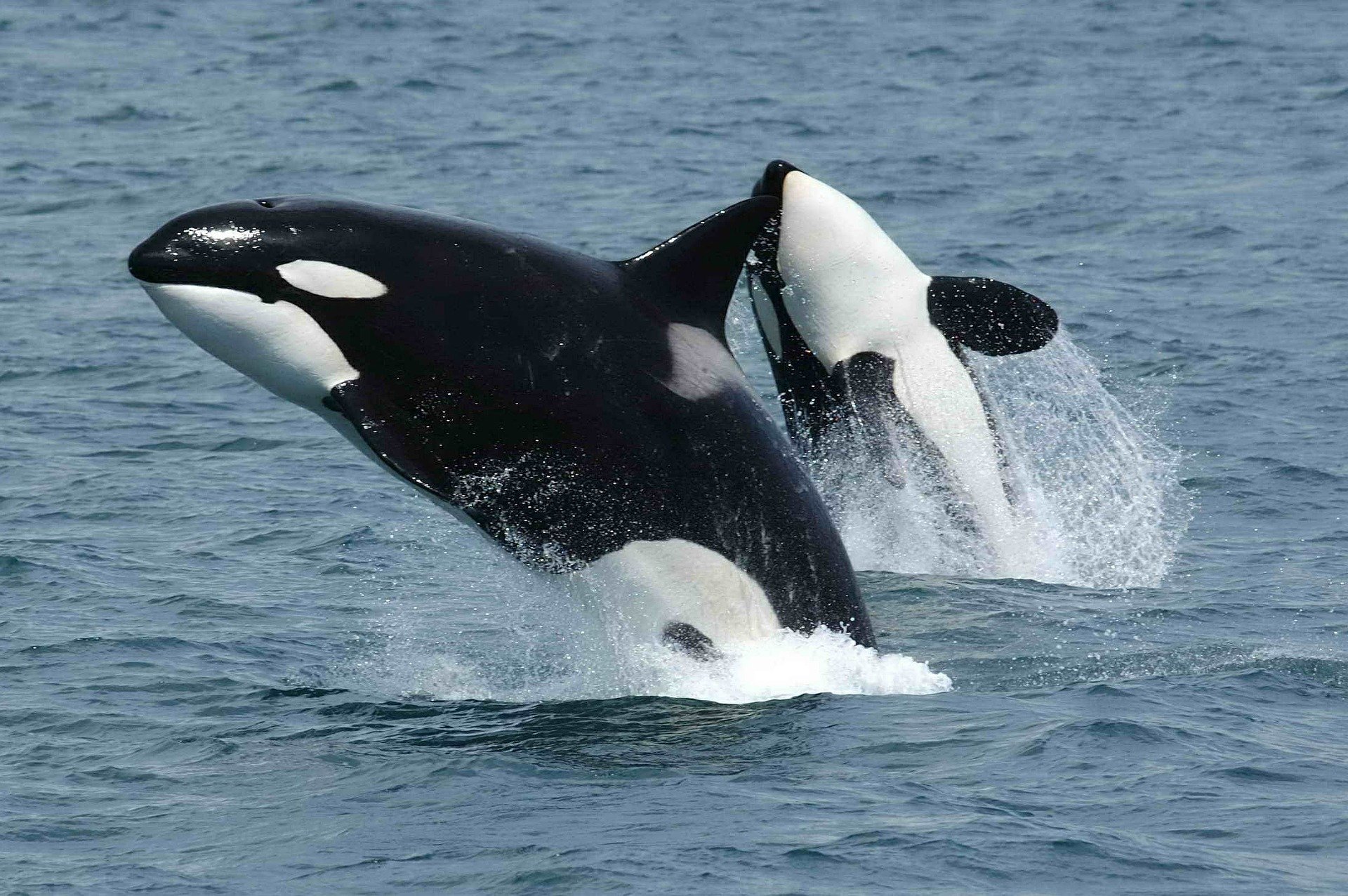by Lynda V. Mapes, The Seattle Times
Tokitae the orca has come home.
Not to swim in her Salish Sea, but for her ashes to be scattered there, in a private ceremony by members of the Lummi Nation, who regard her as a relative.
Sk’aliCh’elh-tenaut, as she was named by the Lummi, will be returned to her home waters Saturday.
On Wednesday, Raynell Morris, a Lummi elder, boarded a Learjet at a private airport in Georgia, the state where the necropsy and cremation of the whale took place, to fly the whale home to Bellingham International Airport. “I am just so happy she is home,” Morris said. “So happy.”
The orca’s ashes are in a white wooden cedar box, about 4 feet long, 20 inches tall and 12 inches across and weighing about 300 pounds, Morris said. An artist painted an image of her actual tail on the top, with the name Toki, short for Tokitae. A shroud also wraps the coffin, with her traditional name, Sk’aliCh’elh-tenaut. It is made from a flag that was flown from a boat over a possible sanctuary site for her and also the area where she was captured.
Before the orca’s remains were transported, Morris brushed her box off with cedar boughs, brought from home, to cleanse any negativity, with the crematory asked to later burn the branches, Morris said.
Morris sang and drummed for the orca Thursday and will do so again Friday, she said. On Saturday, Morris and other Lummi tribal members will hold a sacred water ceremony for her as her ashes—all of them—are returned to the orca’s home waters by tribal members aboard a Lummi police boat. The ceremony will be private.
Morris was charged by the late Bill James, Lummi traditional chief, with bringing the whale back home. Morris said she has made more than a half dozen trips to where the whale was kept in captivity at the Miami Seaquarium to do ceremony for her, in preparation for and to help bring about her return.
Their relationship transformed over that time, to the last visit in which the orca even turned and splashed her, apparently just for fun, Morris said. “My cedar hat was dripping; I laughed and thanked her.” Her work with the orca has been guided by tribal ancestors all along, Morris said, and they will continue to guide it until the orca’s ashes are in the sea.
“Then, and only then, will the work be done,” Morris said.
The orca’s captor, Ted Griffin, sold her to the Miami Seaquarium where she lived until her death Aug. 18. She was immediately after her death taken to the University of Georgia where her remains underwent an extensive autopsy. Results on her cause of death have not yet been released.
A public gathering is being planned to honor the orca’s life, according to the Lummi Nation. The arrangements have not yet been set.
Work has been underway for decades by various groups and even a former Washington governor to bring her home. The Miami Seaquarium maintained that she was better off in their tank than in her home waters, where her family, the J, K and L pods, struggle to survive.
There are 75 orcas today, about as few as when the capture era was ended in 1976 by the intervention of Washington state officials, who took SeaWorld to court to stop the hunts.
Tokitae was believed to be 57 years old. Orca L25 is believed to be her mother and is still alive. The necropsy may finally help determine Tokitae’s family tree.
The Miami Seaquarium was recently purchased by The Dolphin Company, which last March entered into an agreement with Friends of Toki, a Florida nonprofit group, to return her to an ocean sanctuary in the Northwest. It seemed her return to her home waters could happen soon.
And now it will. “I will let her know every stop, every step, what is happening to her, that this is good news; her family will know she is home,” Morris said.
By the mid-1970s, some 270 orcas were estimated to have been captured in the Salish Sea, the transboundary waters between the U.S. and Canada. At least 12 of those orcas died during capture, and more than 50 were kept for captive display.
Tokitae was the last of the southern residents still in captivity. Her death marks the end of an era from which the pods have never recovered. The orcas are listed as a federally protected endangered species and face multiple threats, including pollution, lack of adequate food, particularly Chinook salmon, and boat noise and disturbance that makes it harder for the orcas to hunt.
2023 The Seattle Times.
Distributed by Tribune Content Agency, LLC.
Citation:
Ashes of orca Tokitae finally home after her death last month in Miami (2023, September 22)
retrieved 24 September 2023
from https://phys.org/news/2023-09-ashes-orca-tokitae-home-death.html
This document is subject to copyright. Apart from any fair dealing for the purpose of private study or research, no
part may be reproduced without the written permission. The content is provided for information purposes only.
Denial of responsibility! My Droll is an automatic aggregator of Global media. In each content, the hyperlink to the primary source is specified. All trademarks belong to their rightful owners, and all materials to their authors. For any complaint, please reach us at – [email protected]. We will take necessary action within 24 hours.


